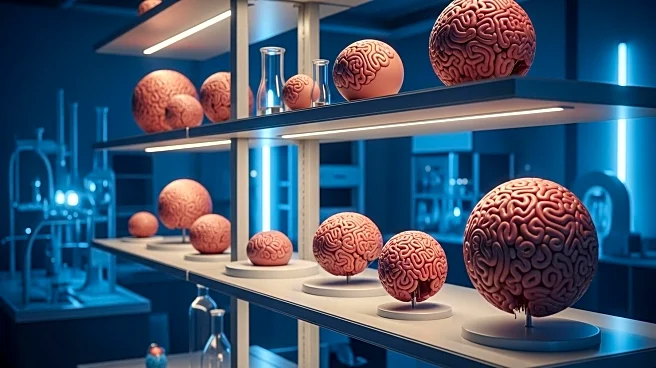What's Happening?
A recent study has established a robust workflow for isolating and immortalizing clonal fibroblast lines from female Rett syndrome patients. The research focuses on patients heterozygous for two distinct MECP2 mutations, c.705delG and 1155del32. The study demonstrates that fibroblast models can effectively capture systemic epigenetic signatures of Rett syndrome, even in non-neuronal cell types. The process involves single-cell clone isolation, immortalization using the NEON transfection system, and mutation status analysis through RNA isolation and PCR. The study aims to provide a reliable in vitro model for understanding MECP2 mutations and their effects on chromatin remodeling.
Why It's Important?
This development is significant as it offers a new method for studying Rett syndrome, a severe neurological disorder. By providing a reliable in vitro model, researchers can better understand the disease's mechanisms, potentially leading to improved treatments. The ability to capture epigenetic signatures in fibroblast models expands the scope of research beyond neuronal cells, offering broader insights into the systemic effects of MECP2 mutations. This could pave the way for new therapeutic strategies targeting the underlying genetic and epigenetic factors of Rett syndrome.
What's Next?
The study suggests further exploration into the systemic effects of MECP2 mutations using these fibroblast models. Researchers may focus on identifying specific epigenetic changes and their impact on cellular functions. Additionally, the workflow could be adapted for other genetic disorders involving chromatin remodeling, broadening its application in genetic research. Future studies might also investigate potential therapeutic interventions that can reverse or mitigate the effects of these mutations.
Beyond the Headlines
The ethical implications of using patient-derived cells for research are significant, as they offer a more personalized approach to understanding genetic disorders. This method respects patient individuality and provides insights that are directly applicable to human health. The study also highlights the importance of interdisciplinary collaboration, combining genetics, cell biology, and epigenetics to advance medical research.











